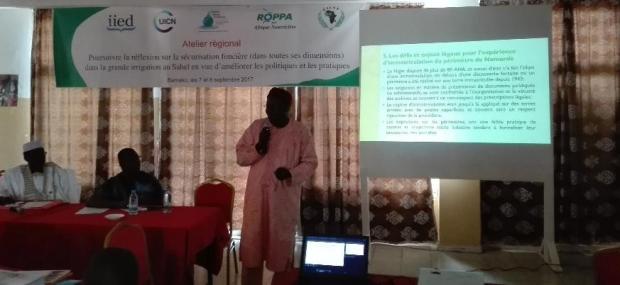Water Security Critical for World Fastest-Growing Economy
Lack of water management and limited access to data risk hindering Myanmar’s economic growth, making water security a top priority of the new government.
Climate change and increased urbanisation, along with earthquakes, cyclones, periodic flooding and major drought, require an urgent infrastructural upgrade if the country is to undergo a successful integration into the global economy after five decades of economic isolation under military rule.
Asia-Pacific Water Summit opens in Yangon
Reports on the meeting on 12-13 December, plus text of "Third Asia-Pacific Water Summit:
Water Security for Sustainable Development
Yangon Declaration:
The Pathway Forward
The Melting Himalayas: Cascading Effects of Climate Change on Water, Biodiversity, and Livelihoods
Abstract:
"The Greater Himalayas hold the largest mass of ice outside polar regions and are the source of
the 10 largest rivers in Asia. Rapid reduction in the volume of Himalayan glaciers due to climate change is
occurring. The cascading effects of rising temperatures and loss of ice and snow in the region are affecting, for
example, water availability (amounts, seasonality), biodiversity (endemic species, predator–prey relations),
ecosystem boundary shifts (tree-line movements, high-elevation ecosystem changes), and global feedbacks
One cannot step into the same river twice: making the Kaladan Project people-centred
The Kaladan Multi-Modal Transit Transport Project (hereafter “Kaladan Project”) will see
the construction of a combined inland waterway and highway transportation system
connecting Mizoram State in Northeast India with a Bay of Bengal deepsea port at Sitetway,
Arakan State in Western Burma. The Indian government is entirely financing the
Kaladan Project, and these funds are officially classified as development aid to Burma.
Once completed, the infrastructure will belong to the Burma government, but the project
Myanmar Integrated Water Resources Management Strategic Study: Research and Analysis, Strategies and Measures
Introduction to IWRM in Myanmar: Setting the right strategy before master planning: "The Myanmar IWRM Strategic Study aims to contribute in a participative manner to the
development of a national strategy for integrated water resources management (IWRM) in
Myanmar1. The fullest possible use has been made of insights into delta management, IWRM
and adaptive water management as developed in the Dutch delta programme and elsewhere
in the world. The strategic study assists in responding to the national IWRM challenges and
Poursuivre la réflexion sur la sécurisation foncière (dans toutes ses dimensions) dans la grande irrigation au Sahel en vue d’améliorer les politiques et les pratiques
Date: 26 juillet 2018
Source: Foncier & Développement
Un atelier régional a été organisé à Bamako en septembre 2017, intitulé « Poursuivre la réflexion sur la sécurisation foncière (dans toutes ses dimensions) dans la grande irrigation au Sahel en vue d’améliorer les politiques et les pratiques ». Il était organisé par le ROPPA, le CILSS et GWI.
La distribución del recurso hídrico como condición de la evolución de las estructuras agrarias argentinas
Se desarrollan aspectos de la diferenciación socioagraria de la Argentina a partir del manejo del agua. Se muestra que la articulación del conocimiento geográfico de las variables ambientales con el análisis de la estructuración social permite desarrollar esta problemática particular y explorar algunas de las consecuencias que la misma tendría actualmente sobre las estructuras agrarias.
Mayordomía del agua : propuesta a partir del análisis de sus usos y riesgos en la cuenca "La Antigua", Veracruz.
El manejo actual del agua en México contradice la postura oficial respectiva. Para mostrar algunos ejemplos, se analizaron los distintos usos del agua y el suelo en la cuenca La Antigua (2,326.43 Km2) en Veracruz, describiéndola como un estudio de caso. La precipitación anual estimada es abundante, su uso es continuo en las tierras de la región, y aún se considera que existen problemas de abastecimiento de agua.
Water demand and flows in the São Francisco River Basin (Brazil) with increased irrigation.
Most activities that support economic growth in the São Francisco Riber Basin (Brazil) need water. Allocation of the water resources to each competing use needs quantification in order to develop an integrated water management plan. Irrigation agriculture is the largest water consuming activity in the basin. It has produced large economic and social advancements in the region and has potential for further development. The local development agency in the São Francisco River has projected an increase of more than 500,000ha in irrigation developments distributed within the basin.
Dynamic systems approach assess and manage water resources in river basins
The Piracicaba, Capivari and Jundiaí River Basins (RB-PCJ) are located in the States of Minas Gerais and São Paulo, Brazil. By 2005, 5.8% of Brazil's General National Product-GNP was produced there. Such economic development has created a huge demand for water resources. The availability of water resources was assessed by running a dynamic systems simulation model to manage these resources in the RB-PCJ (WRM-PCJ), considering five 50-year simulations. WRM-PCJ was developed as a tool to aid the RB-PCJ Watershed Committee.
Water levels and soil mulches in relation to strawberry diseases an yield in a greenhouse
A influência de doenças na produtividade do morangueiro cultivado em estufa, bem como sua associação com o manejo da irrigação é pouco conhecida. Desta forma, o presente trabalho teve por objetivo avaliar o efeito de diferentes níveis de água e coberturas do solo na sanidade e produtividade do morangueiro, sob ambiente protegido. O experimento foi realizado em Atibaia, estado de São Paulo, Brasil, de abril a dezembro de 1995.



